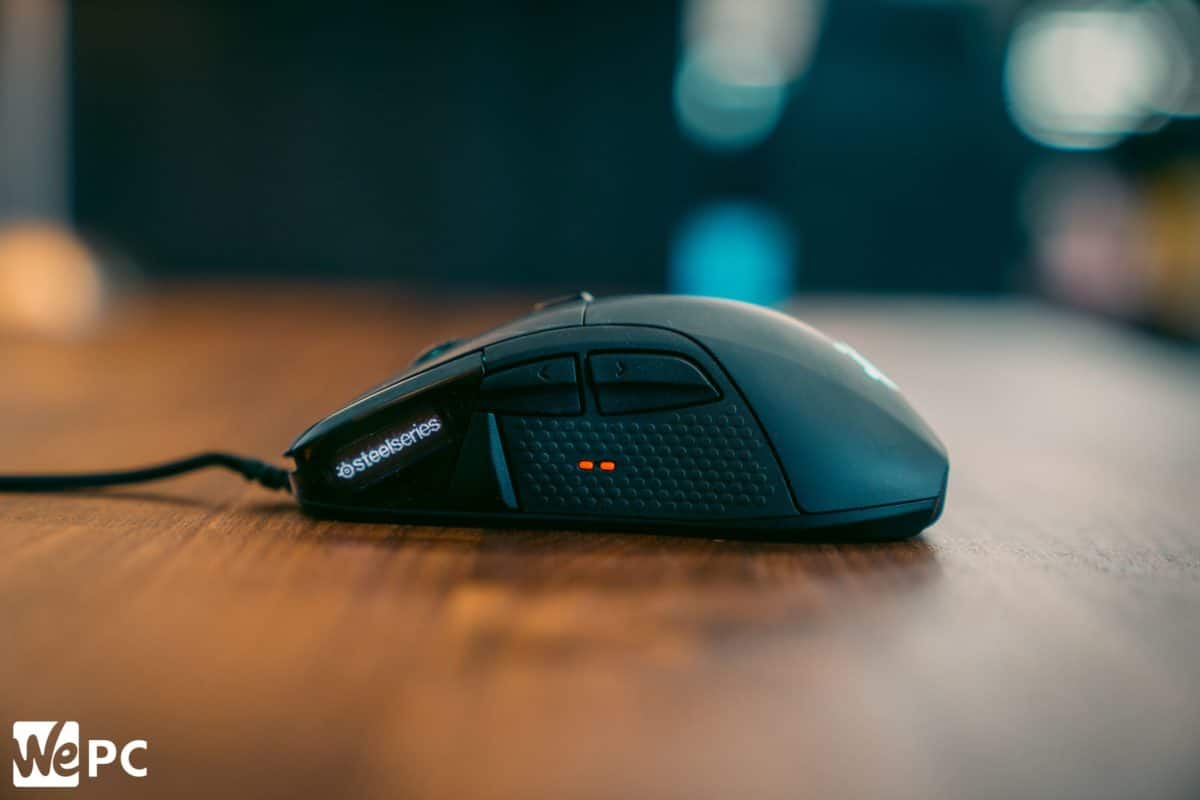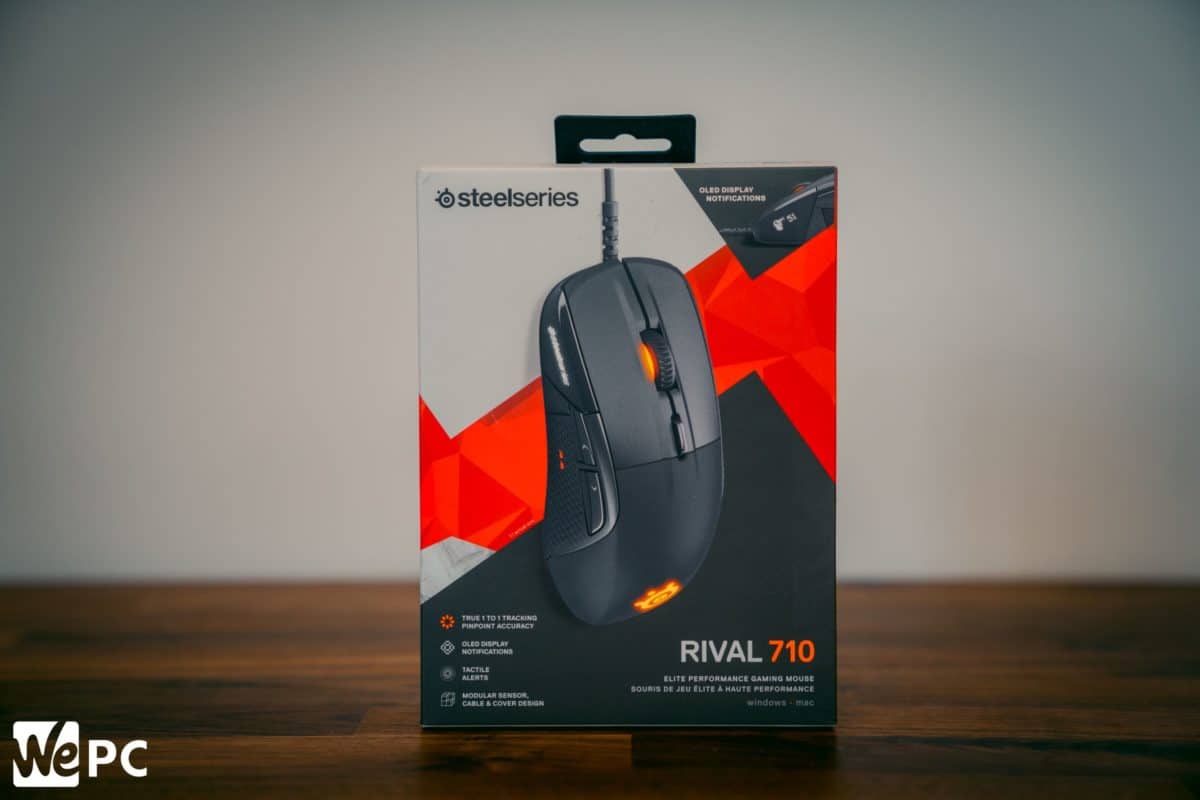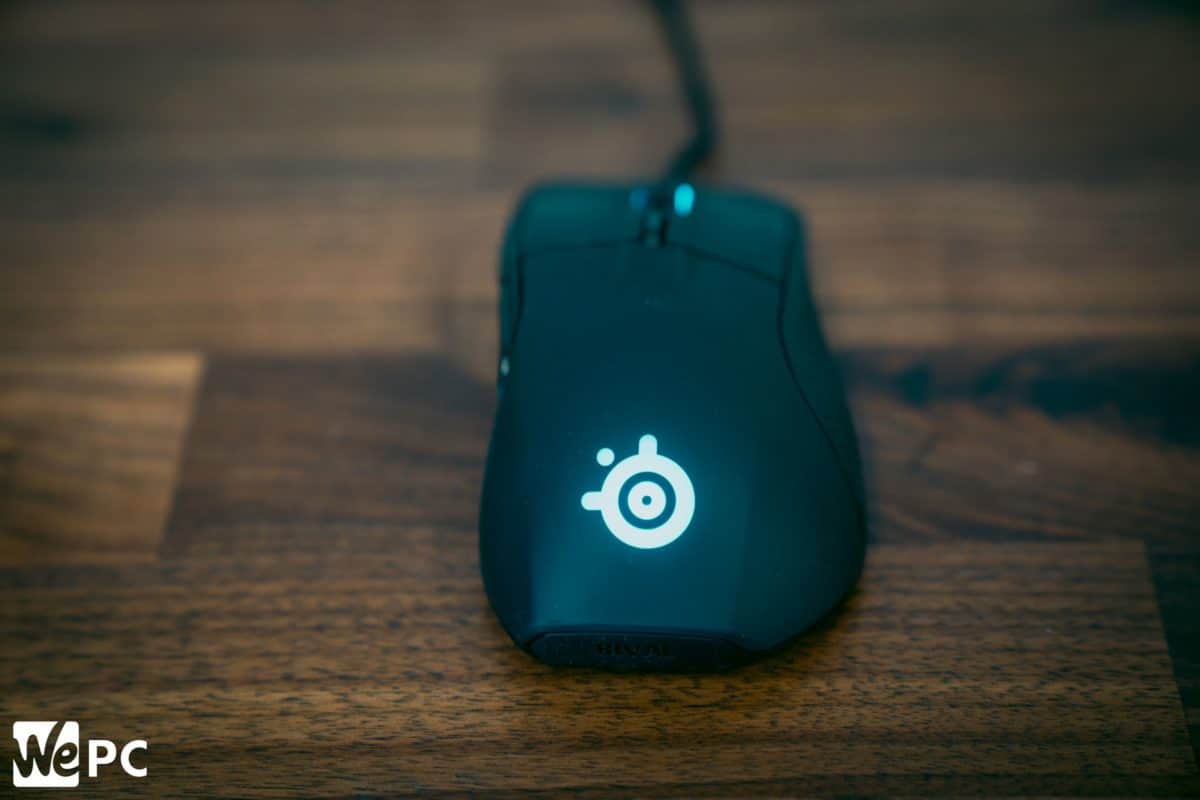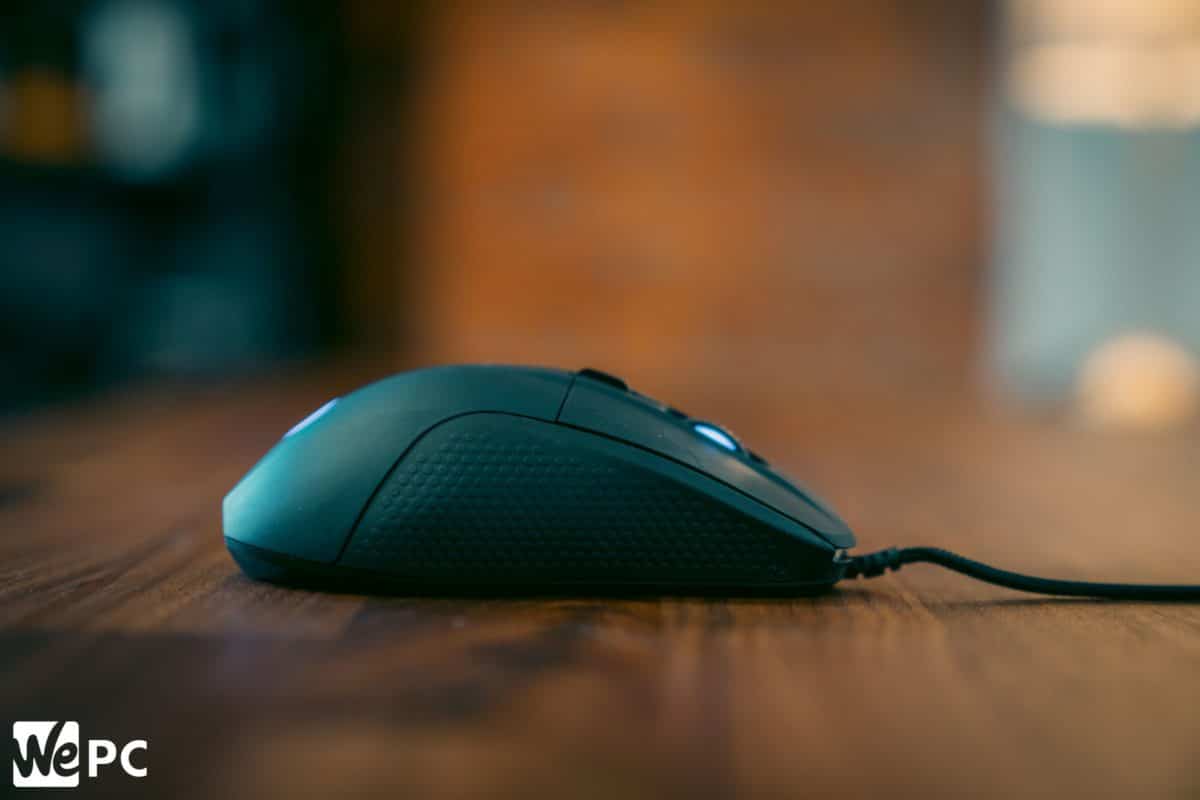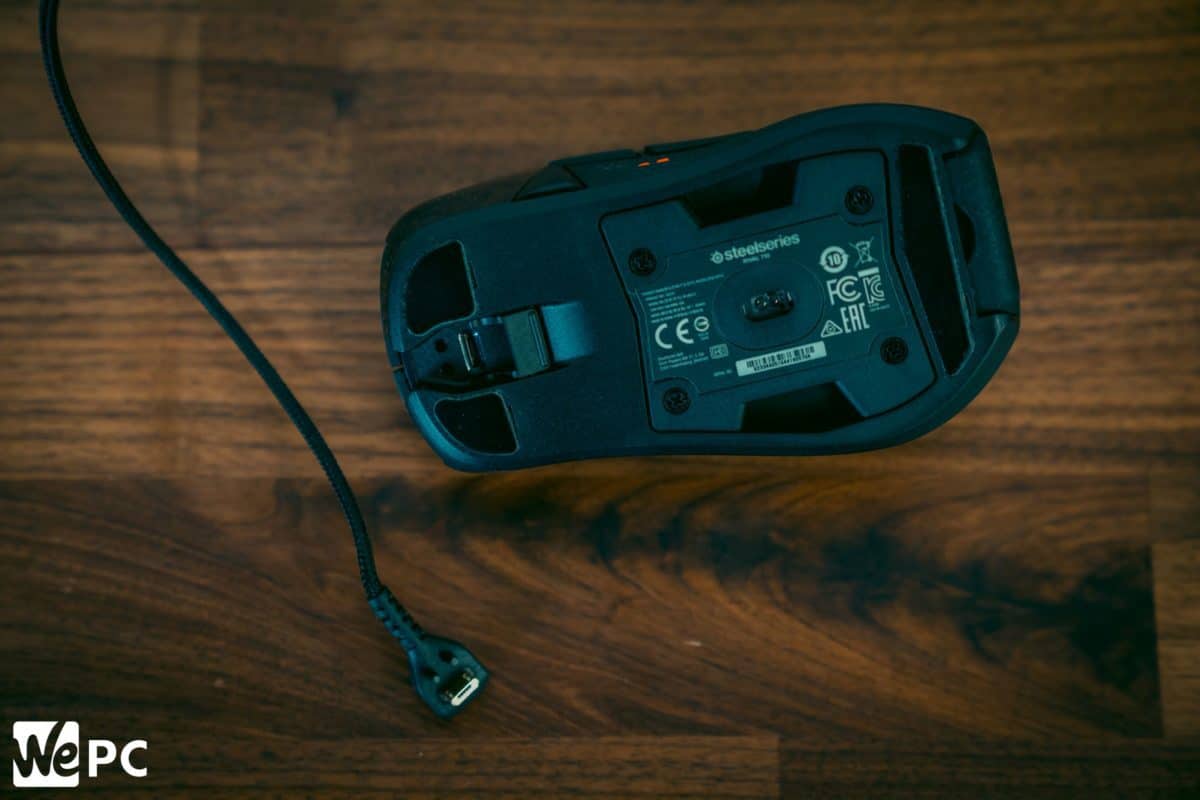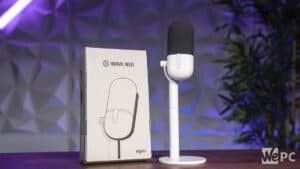SteelSeries Rival 710 Mouse Review
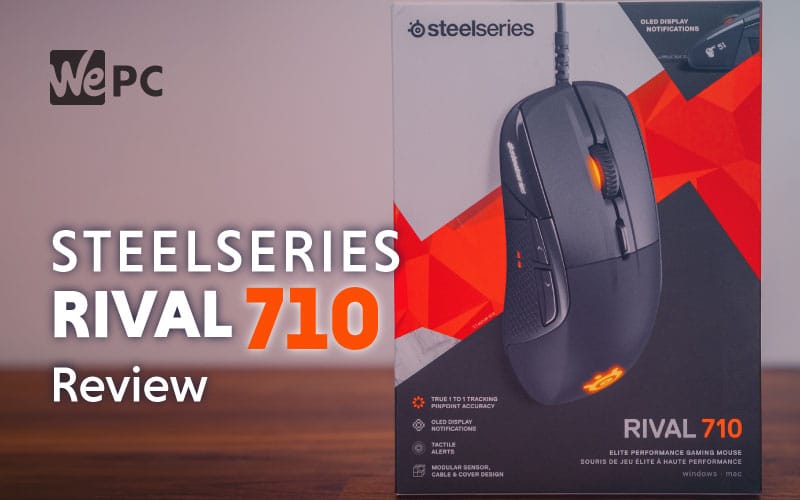
WePC is reader-supported. When you buy through links on our site, we may earn an affiliate commission. Prices subject to change. Learn more
The Big Daddy. A uniquely featured mouse from SteelSeries has all the performance you want under the shell with some new and very interesting features to go with it!
SteelSeries has released the sequel to the discontinued Rival 700 mouse which featured tactile responses and an OLED screen on the side. The mouse was boasted as the first modular mouse and these features have been carried over to the new and improved Rival 710, which SteelSeries are calling ‘the world’s most advanced gaming mouse’.
The upgraded Rival 710 is a modular mouse like its predecessor and I can’t say if Steelseries have nailed the gaming mouse on the head here but I like the fact they are trying new things. Going forward being able to create more custom mice could be a really cool way to go. The 710 has some weight to it and its noticeable in games where your head is on a swivel (CSGO) but overall a very comfortable mouse due to its ergonomic shape and soft-touch finish. The performance was excellent thanks to the upgrade to the TrueMove3+ sensor and was quite nice to use for both gaming and in the office.
[mks_col]
[mks_one_half]
Pros
- Attractive Design – Looks like a gaming mouse.
- Comfortable – Ergonomic shape.
- Great Tracking – New TrueMove3+ sensor is incredible.
- High Quality – Well built and high-quality materials used.
- Modular – Customisation options.
- Tactile Alerts – In-game vibration/RGB alerts.
[/mks_one_half]
[mks_one_half]
Cons
- Weight – Could be considered too heavy for some.
- Thumb button – Extra inaccessible button seems pointless.
- Price – Extra features come at a price.
[/mks_one_half]
[/mks_col]
[mks_col]
[mks_one_half]
Mouse Size & Weight
- Weight: 136g
- Size: Medium
- Length: 12.4cm -4.9 inches
- Width: 7.2cm – 2.8 inches
- Height: 4.2cm – 1.6 inches
- Hand Orientation: Right
[/mks_one_half]
[mks_one_half]
Mouse Tech
- Sensor: TrueMove3
- Buttons: SteelSeries mechanical (60m)
- DPI: 200-12000
- Polling Rate: 125 / 250 / 500 / 1000Hz
- Connection: Wired
- Cable: Braided
- Cable Length: 2m
[/mks_one_half]
[/mks_col]
What’s in the box
Nothing new from the box, SteelSeries packaging is quite simple but packs enough style to make you double look. It features the product on the front along with some mouse specifications.
What you get:
- Rival 710 mouse
- USB braided cable (2m)
- USB PVC cable (1m)
- Product information guide
Size & Weight
The Rival 710 is a medium-sized mouse that weighs in like a large mouse. Its 12.4 cm long which is the same as the Logitech G603/703. It strangely feels longer than the Logitech mice due to the slightly steeper hump in the middle (4.2 cm) and its chunkier body width (7.2 cm). Despite its size and weight, the mouse is surprisingly easy to use in all grip styles but it can be tiring. It’s worth noting the shape of this mouse makes it appear and feel much bigger than it is and I’m not sure why SteelSeries would want this.
Without the wire the Rival 710 weights 136 grams which put this mouse in a similar weight category as the Corsair m65 Pro and Roccat Tyon which in no way feel light to use. Plenty of people love a good heavy mouse though and this could be a better option than its heavyweight rivals. The weight can’t be customised like in the Rival 600/650 but it’s not necessarily a bad thing as the more I used it the more I found the weight to assist accuracy. The weight may have assisted in the odd flick or one tap but it was harder to micro-adjust for spray downs and it did fatigue my arm/wrist after a few games. It was just in CSGO I had an issue with the weight due to there being lots of corners to check constantly but it was relatively a high performing mouse across the board in PUBG and even better in Dota2.
Shape & Texture
The overall shape of the Rival 710 is exactly the same as the Rival 700 and not far from the 310 for its design. It’s a chunky mouse almost all over with defined edges and modular sections playing a big part in the design. It has quite a high profile curve and slopes gently to the front buttons while the slope aggressively disappears towards the back. The left side is excellent and the slight groove houses my thumb very comfortably while also providing extra grip from the rubber textured panel. The right of the mouse is very ergonomic and slopes outward like on the Rival 310 giving you a nice resting place for your ring finger and pinky. I wasn’t a fan of the shape at the back of the mouse as I found the defined edge where my thumb knuckle sits was obstructing my grip a bit and compromised the comfort as it was digging into my hand (bottom left corner at the rear of the mouse). This issue could be down to my palm grip while in the office or palm/claw combination while playing but still the Rival 310 had a more rounded ergonomic edge and didn’t have this problem.
Just like the shape the texture is like the Rival 700 and features the soft touch feel material I liked from the Rival 600. The soft-touch finish is all over and is a mouse material I’ve come to enjoy much more than plain matte plastic or the slippier smooth plastic. The soft-touch finish is great but it can pick up dirt a lot easier than its harder plastic counterparts but nothing you can’t handle. If soft touch isn’t for you and you gain a better grip from a harder plastic then the modular nature of this mouse comes into play. You can swap out the palm cover to this mouse for a matte/glossy black replacement at an extra cost of course.
Buttons
The switches in the Rival 710 are SteelSeries own mechanical ones that last 60 million clicks (same switches as the Rival 650) and they feel great. They have a really satisfying click with a low actuation force and feel very responsive. The primary buttons are separated from the mouse with what SteelSeries call their ‘split-trigger’, meaning they move independently from each other which doesn’t improve performance as far as I can tell but is a really nice design feature.
The mouse has 7 programmable buttons which are a fairly average amount these days. There is a clickable scroll wheel in its usual spot and sits quite low in the mouse like the Rival 310. The wheel has tactile feedback when scrolling and feels slow compared to other wheels which I prefer as it makes it easier to switch weapons in a game like CSGO accurately.
Just behind the wheel is a DPI button which will allow you to change between two preset DPI options which you can change in the SteelSeries Engine software. There are also three thumb buttons on the 710 which feel sturdy and reliable. The thumb buttons have a sort of beveled edge making it easier for you to slide your thumb up and actuate them. There is a thumb button that sits out of reach even for people with similar hands to salad fingers and I don’t quite see the point in it but it’s an extra button.
Cable
The Mouse comes with a braided 2-metre long cable attached. The wire is slightly thicker than the one on the Razer Deathadder Elite and has a rougher texture to the braiding. The wire sat nicely in most bungees I tried but did slip through the smoother budget one which I have come to expect. The wire is easily detachable if you need to pack away or change it out for the PVC cable that comes in the box. The rubber cable is shorter (1 metre) and they have given customers the option of both to accommodate for different setups. The shorter PVC cable is the same but without the braiding so naturally is thinner but it still sat in my Zowie Camade with minimal movement.
Sensor & Performance
The latest sensor from SteelSeries is at the heart of the Rival 710 and its a flawless one. The TrueMove3+ sensor features in the Rival 310 and 600 and now comes as a modular piece of kit but I’m not sure why you’d change it for the older laser sensor the Rival 700 had. It’s similar to the PMW3360 and offers 12,000 CPI, IPS speed of 350 but with improved raw tracking from 2000 to 3500. This sensor gives you the benefit of 1 to 1 precise tracking without gaining extra latency or losing jitter reduction. Using the software you can alter the CPI and have it set from 100 to 12,000 going up in increments of 100.
I have used a variety of SteelSeries mice with this sensor and I’ve not had an issue yet, it seems to perform perfectly every time. It was strange using this mouse as the sensor helped me track enemy heads very precisely and snapping to a target was effortless. The problem for me is with the weight of the mouse, If this was 15 grams lighter it would be perfect as even though the grip isn’t my favourite it’s still comfortable. The performance of the mouse in-game was unrivaled and if you think you may struggle with the weight the Rival 600 is a good mid-weight option or the 310 for a lightweight alternative. The only resistance you’re facing with this mouse is the weight but despite this, the mouse glides across my cloth pad with ease and if you love the heavier mice this could be a great option.
The Rival 710 features something a bit different from its competitors as it has an OLED screen on the side and the mouse has the power to give tactile responses physically and visually. These features have been brought over from the Rival 700 and are powered by ‘SteelSeries GameSense’. The OLED is a bit of a gimmick but its kind of cool, You can personalise the display to anything that has been hand-drawn which is amusing (I’m not childish I promise). There are also some custom images you can download straight from SteelSeries or ones created by other Rival 710 owners. The OLED can be used in-game to show stats such as health or average damage per round (ADR) which you won’t be looking at in-game but I enjoyed seeing my KDR on the mouse at the end of a competitive match.
Another visual alert the mouse is capable of is through its RGB lighting. The lights even have a default setting which I was unaware of but the light in my scroll wheel would show me my health while playing CSGO and flash when it hit 10%. It’s not a feature that I looked at very often but I quite like it, the colour of the logo would change to reflect how much money I had but the logo sits under my palm so not sure on the point but you can customise all of this through the software.
Visual alerts aside there is another interesting feature to this mouse and that is its tactile alerts. The tactile alerts work similarly to the lighting and you can use them across a multitude of games. Again I first noticed this in CSGO when at the start of the round the mouse would vibrate in my hand, Funnily enough, I assumed this was a bit of grit under the mouse so I kept cleaning my mouse pad until I realised it did this. Once I knew what was going on I didn’t mind this feature but its something much better suited to games with cooldowns such as Dota or Overwatch as it can give you an instant indication that an ability is ready to be activated again. It’s not to say it’s useless in CSGO as there is a feature where you can set it to buzz alerting you to low ammunition and prompting a reload. To see the full range of customisation with this feature please see out software guide here.
Mouse Software
In SteelSeries Engine 3 you can change your DPI settings, remap buttons and fiddle with the RGB lighting effects. Interestingly the software lets you alter the LOD detection and you can change the amount of angle snapping your cursor has, which may benefit you if you draw but it certainly won’t in-game. Don’t forget you can also completely personalise your tactile alerts in the software for a variety of games or even discord!
To personalise the alerts for specific games you can do this by selecting the APP tab in the software. Here you can configure the mouse for different applications and it gets quite detailed. If for example, you play CSGO you can add illumination or tactile alerts to:
Illumination
-
- Health
- Ammo
- Round Kills
- Headshots
- Flashbang Blindness
- Money
- Match Kills
- Armour
- Helmet
Tactile
-
- Health
- Ammo
- Round Kills
- Headshots
- Flashbang Blindness
- Holding Grenade
- Death
- Reloading
- Bomb Dropped/Picked Up
- Weapon Switch
Not all of these alerts are useful for serious Counter-Strike gamers but I had a play around and I quite enjoyed the ammo alert as it came in handy during a clutch situation when I failed to realise I had 1 bullet left and I wasn’t going for the dream. The OLED pops up with the legendary CS headshot icon in-game when you pop someone which was nice.
Our Verdict
Overall the quality is there from SteelSeries but at around £100/$100 it’s at the top end of the range for gaming mice. Its got some very interesting features and the design is stylish. The shape is comfortable but there are some far better ergonomic shapes out there for right-handed gamers and most of them cheaper than the Rival 710. I think the price and weight can be an off-putting factor for some, if you think it’s too heavy then I’d consider the Rival 600 as it features the same great sensor, switches and soft-touch finish. If the price is a factor then the Deathadder Elite costs nearly half as much with a slightly inferior sensor but with balanced weight distribution and a comfier ergonomic shape. The mouse does have the added benefit of unique features. If you like the idea of personalising your mouse with a little image or gif on the display then you can with the 710. Maybe you like the idea of the tactile responses the mouse gives from different applications but the important thing to know is if the weight doesn’t bother you this is high performing mouse that won’t let you down and has to be considered.

